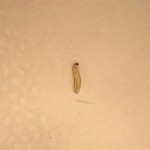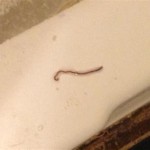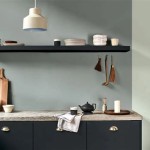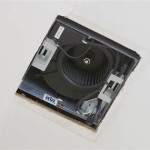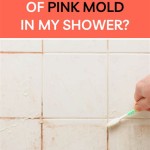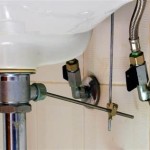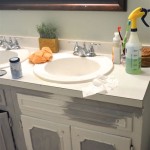Why Are There Suddenly Ants In My Bathroom?
The sudden appearance of ants in a bathroom is a common household nuisance that can quickly escalate from a minor annoyance to a full-blown infestation. Understanding the reasons behind this phenomenon is crucial for effective prevention and control. Ants are attracted to bathrooms for a number of reasons, primarily related to food sources, water availability, and suitable nesting sites. The bathroom environment, often characterized by moisture and humidity, can inadvertently create an ideal habitat for these persistent pests.
The specific species of ants invading a bathroom also plays a significant role in determining the root cause of the problem. Different ant species have varying preferences and behaviors, influencing their food sources and nesting habits. Identifying the type of ant is a critical first step in implementing targeted and effective pest control strategies. For example, sugar ants are primarily drawn to sweet substances, while carpenter ants are attracted to damp wood, creating different issues in terms of prevention and remediation.
The presence of ants in a bathroom is often a symptom of a larger problem, ranging from minor plumbing leaks to inadequate sanitation practices. Thorough investigation of the bathroom environment, combined with an understanding of ant behavior, is necessary to pinpoint the underlying causes and implement appropriate solutions.
Moisture and Water Sources: An Irresistible Attraction
One of the primary reasons ants are drawn to bathrooms is the presence of moisture and water. Bathrooms inherently have higher humidity levels than other rooms due to showers, baths, and sinks. Ants require water for survival, and a readily available water source in the bathroom can be highly attractive, especially during drier seasons. Leaky faucets, dripping showerheads, and condensation on pipes can all provide a constant source of water that sustains ant colonies.
Furthermore, inadequate ventilation can exacerbate moisture problems in the bathroom. Poor airflow allows humidity to build up, creating a damp environment that is conducive to ant activity. This is particularly true in bathrooms without windows or those with poorly functioning exhaust fans. The prolonged presence of moisture not only attracts ants but also contributes to the growth of mold and mildew, further complicating the issue.
Beyond visible leaks, hidden moisture sources can also attract ants. Leaks behind walls, under sinks, or around toilets can create damp, sheltered environments that are ideal for ant colonization. These hidden leaks can be difficult to detect, requiring careful inspection and potentially the assistance of a professional plumber. Addressing these underlying moisture problems is crucial to eliminating the root cause of ant infestations in the bathroom.
Moreover, the design of some bathroom fixtures can inadvertently create water traps. For instance, shower caddies with drainage holes that become clogged can accumulate water, providing a readily accessible source for ants. Similarly, soap dishes that retain water can also attract ants seeking moisture. Regularly cleaning and maintaining these fixtures can help minimize the availability of water sources.
In addition to the availability of liquid water, high humidity levels alone can be sufficient to attract certain ant species. Ants can absorb moisture directly from the air, particularly in enclosed spaces with poor ventilation. Reducing humidity through the use of dehumidifiers or improved ventilation can make the bathroom less attractive to ants.
Food Sources: Beyond Crumbs and Spills
While bathrooms are not typically associated with food preparation, they can still provide a surprising range of food sources for ants. The most obvious food source is organic matter that accumulates in drains and sinks. Hair, soap scum, and toothpaste residue can all provide sustenance for ants, particularly if drains are not regularly cleaned. These substances decompose over time, creating a nutrient-rich environment that attracts ants seeking nourishment.
Furthermore, personal care products, such as lotions, creams, and shampoos, can also contain ingredients that ants find attractive. Sugars, oils, and other organic compounds in these products can serve as a food source, especially if spills or residue are left uncleaned. Even seemingly innocuous items like cotton swabs and dental floss can attract ants if they contain traces of organic matter.
The accessibility of food sources is also a crucial factor. Open containers of lotions or creams, unsealed toothpaste tubes, and overflowing trash cans can all provide easy access to food for ants. Proper storage and disposal of these items are essential for preventing ant infestations. Regularly cleaning surfaces and emptying trash cans can eliminate potential food sources and make the bathroom less appealing to ants.
In some cases, ants may be foraging in the bathroom for food sources located elsewhere in the house. Trails of ants leading from the bathroom to the kitchen or pantry are a clear indication that ants are searching for food and water in multiple locations. Addressing the food sources in other areas of the house is crucial for eliminating the overall ant problem.
The presence of dead insects in the bathroom can also serve as a food source for ants. Ants are scavengers and will readily consume dead insects, such as flies or spiders, that may be trapped in the bathroom. Regularly removing dead insects can help eliminate this food source and make the bathroom less attractive to ants.
Nesting Sites: Shelter and Security
Ants are constantly searching for safe and secure nesting sites, and the bathroom can sometimes provide ideal conditions. The damp, dark, and sheltered spaces behind walls, under sinks, or around pipes can be attractive to ants seeking a place to build their colonies. These areas offer protection from the elements and predators, as well as access to nearby food and water sources.
Damp or rotting wood is particularly attractive to carpenter ants, which excavate tunnels in the wood to create their nests. Leaky pipes or poor ventilation can contribute to wood rot, creating an ideal habitat for carpenter ants. Identifying and addressing any wood rot in the bathroom is crucial for preventing carpenter ant infestations.
Cracks and crevices in walls, floors, and tiles can also provide nesting sites for smaller ant species. These small openings offer protection and access to nearby food and water sources. Sealing cracks and crevices with caulk or sealant can help prevent ants from establishing nests in these areas.
The insulation around pipes can also serve as a nesting material for ants. Ants may tunnel into the insulation to create their nests, particularly if the insulation is damp or damaged. Inspecting and repairing any damaged insulation can help prevent ants from using it as a nesting site.
Furthermore, potted plants kept in the bathroom can also provide nesting sites for ants. The soil in potted plants can be attractive to ants seeking moisture and organic matter. If ants are found nesting in potted plants, it may be necessary to repot the plants with fresh soil or move them to a different location.
The location of the bathroom within the house can also influence its attractiveness as a nesting site. Bathrooms located near the exterior of the house, particularly those with poorly sealed windows or doors, may be more susceptible to ant infestations. Addressing any gaps or cracks in the building's exterior can help prevent ants from entering the bathroom and establishing nests.
In conclusion, the sudden appearance of ants in a bathroom is a complex issue with multiple contributing factors. Addressing the underlying causes, such as moisture problems, food sources, and nesting sites, is essential for effective prevention and control. Regular cleaning, proper maintenance, and targeted pest control strategies can help keep bathrooms ant-free.

Why Do I Have Ants In My Bathroom

Boise Idaho Pest Control Pestcom

Are Ants Attracted To Your Bathroom Terminix

Why Do I Suddenly Have Ants In My House Critters Pest Management Pty Ltd

Why Do I Suddenly Have Ants In My House Loyal Termite Pest Control Extermination Services

Boise Idaho Pest Control Pestcom

Why Do I Suddenly Have Ants In My House Loyal Termite Pest Control Extermination Services

How To Stop Ants From Invading Your Bathroom Identification And Prevention Tips Tabor Pest Control

Here S Why Ants Are In Your Room Even If There No Food Pest Pointers

5 Reasons You Keep Having Ant Problems In Your Home
Related Posts
